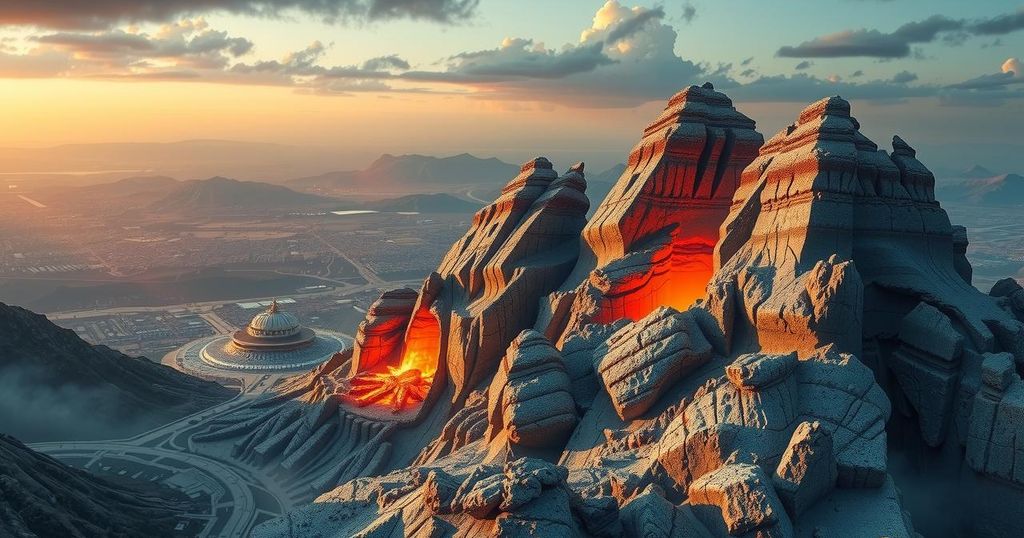Global news
ASIA, BRITISH GEOLOGICAL SURVEY, EARTHQUAKE, EARTHQUAKES, FUKUSHIMA NUCLEAR PLANT, JAPAN, NATURAL DISASTER, NATURAL DISASTERS, NORTH AMERICA, PACIFIC, PACIFIC PLATE, PERU, SENDAI, SHALLOW EARTHQUAKE, SOUTH AMERICA, UNITED STATES, WESTERN STATES SEISMIC POLICY COUNCIL
Leila Ramsay
0 Comments
The Most Significant Earthquakes in Recorded History
The article details the five most significant earthquakes in history, emphasizing the catastrophic impacts, death tolls, and the vast geographic areas affected. It provides a historical overview of each major event, highlighting their magnitudes, casualties, and the subsequent consequences of the seismic activities, particularly related to tsunamis. The focus remains on providing a comprehensive understanding of these natural disasters within the context of their geological backgrounds.
On December 26, 2004, the Indian Ocean experienced a catastrophic earthquake, measuring 9.1 in magnitude, leading to immense destruction across numerous nations. The tragedy resulted in over 220,000 fatalities, marking it as one of the deadliest natural disasters in recorded history. Major earthquakes predominantly occur across the globe, particularly in the South Pacific region, which is situated on the Pacific tectonic plate. Notably, 80% of significant earthquakes take place at the boundaries of this plate, within an area colloquially known as the ‘Ring of Fire.’ This zone encompasses the eastern coast of Asia and extends to the western shores of the Americas and parts of Africa. The five strongest earthquakes documented have all occurred within this violent geological arena.
Among these historical seismic events, the following five earthquakes stand out:
5. Russia 1952: A 9.0 magnitude earthquake struck Severo-Kurilsk on November 4, 1952, causing a local tsunami with waves reaching 50 feet. Tragically, between 10,000 to 15,000 individuals perished, with a significant portion of Severo-Kurilsk’s residents unable to evade the subsequent tsunami waves.
4. Japan 2011: A magnitude 9.0 quake hit off the northeastern coast of Honshu on March 11, 2011, followed by numerous strong aftershocks. The ensuing tsunami led to extensive destruction, including a catastrophic incident at the Fukushima nuclear power plant, resulting in widespread radiation leaks. Approximately 18,000 people lost their lives or went missing.
3. Indian Ocean 2004: The Boxing Day earthquake generated severe tsunamis across Southeast Asia, affecting nations like Indonesia, Thailand, and India, resulting in over 230,000 deaths across 15 countries. This disaster exemplifies the catastrophic potential of seismic activity in this region.
2. Alaska, USA 1964: Known as the Good Friday earthquake, the 9.2 magnitude quake on March 27, 1964, was the most powerful recorded in the United States, leading to widespread destruction across Alaska, and waves of over 27 feet hitting the mainland. This disaster resulted in 128 fatalities and incurred damages estimated at $895 million.
1. Chile 1960: The most powerful earthquake recorded, ranging between 9.4 and 9.6 in magnitude, occurred off the coast of Valdivia, Chile. This event produced devastating tsunami waves that reached heights of 80 feet, displacing approximately two million people and claiming around 1,655 lives.
In summary, these monumental earthquakes have not only shaped geological understanding but have also profoundly affected the lives of countless individuals, showcasing the immense power and unpredictability of nature. Their historical significance underscores the necessity for ongoing research and preparedness in seismically active regions, as the threat of similar disasters remains ever-present.
The phenomenon of earthquakes occurs as a result of the movement of tectonic plates, which are large slabs of the Earth’s crust. The Pacific plate, in particular, is notorious for hosting a vast majority of the world’s most powerful earthquakes due to the extreme tectonic activity at its boundaries, a region known as the ‘Ring of Fire.’ This seismic belt encircles the Pacific Ocean and is characterized by frequent and intense geological activity, including earthquakes and volcanic eruptions. Understanding the scale and impact of past earthquakes, particularly those of significant magnitude, is crucial for enhancing disaster preparedness and response skills worldwide.
In conclusion, the history of seismic activity showcases several monumental earthquakes, each leaving lasting impacts on human life and geography. From the catastrophic loss of life in Indonesia and Japan to the earth-shattering events in the Americas, these tremors remind society of the raw power of nature. The ongoing response and research into seismic events are paramount in mitigating future risks and preparing for potential disasters that may arise.
Original Source: www.standard.co.uk




Post Comment